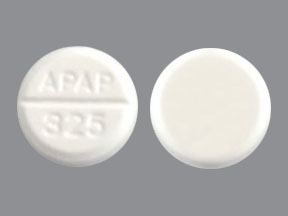
Gnp Pain Relief Coupons & Savings Card – Discount Prices from $4.34
Brand for: Acetaminophen
My prescription
Edit
325MG, Acetaminophen (30 Tablets)
Select pharmacy

Walgreens
$4.34
COUPON PRICE
Albertsons
$4.34
COUPON PRICEGnp Pain Relief savings card
Show this card to your pharmacist
Walgreens
$4.34
BIN
ID
PCN
GRP
011867
LH13669282
HT
LABH001
Powered by
Gnp Pain Relief (Acetaminophen) dosage forms
Dosage Quantity Price from Per unit 325MG 30 Tablets $9.61 $0.32 325MG 60 Tablets $10.22 $0.17 325MG 90 Tablets $10.83 $0.12
| Dosage | Quantity | Price from | Per unit |
|---|---|---|---|
| 325MG | 30 Tablets | $9.61 | $0.32 |
| 325MG | 60 Tablets | $10.22 | $0.17 |
| 325MG | 90 Tablets | $10.83 | $0.12 |
Gnp Pain Relief Warnings
Acetaminophen, when used excessively, poses a significant risk of severe, potentially fatal liver damage. To ensure safe usage:
- Adults are advised not to exceed a daily dosage of 4000 milligrams (4 grams) of acetaminophen. Individuals with liver conditions and children should adhere to a reduced dosage, as recommended by their healthcare provider.
- It is crucial to avoid combining acetaminophen with other medications containing the same active ingredient without consulting a doctor or pharmacist. Acetaminophen is present in many over-the-counter and prescription medications, including those for pain relief, fever, and cough-and-cold symptoms. Always review medication labels or seek guidance from a pharmacist to verify acetaminophen content.
- In the event of an overdose, immediate medical attention is required, regardless of the presence or absence of symptoms. Symptoms of overdose may encompass nausea, vomiting, loss of appetite, sweating, abdominal pain, severe fatigue, jaundice, and dark urine.
- Consuming alcohol daily, particularly in conjunction with acetaminophen, can result in liver damage. It is advisable to avoid alcohol consumption while using this medication.
By adhering to these guidelines, the risks associated with acetaminophen can be minimized, ensuring safe and effective use.
Gnp Pain Relief Side Effects
When using this medication, you might notice some redness, mild itching, or irritation where it is applied. These side effects are usually not serious and should subside on their own. However, if they persist or worsen, it's important to inform your healthcare provider. Serious side effects are uncommon, but it's crucial to stop using the medication and seek medical attention if you experience blistering or swelling at the application site, or if you feel increased or unusual pain. Though rare, a very serious allergic reaction can occur. Be vigilant for signs such as rash, swelling, particularly of the face, tongue, or throat, severe dizziness, or difficulty breathing. These symptoms require immediate medical attention. Remember, this list may not cover all possible side effects, so if you notice any other unusual symptoms, reach out to your healthcare provider promptly. Always prioritize your health and stay informed about the medications you are using.
Gnp Pain Relief Interactions
When using GNP Pain Relief products, it's important to be aware of potential interactions with other substances:
Alcohol: Combining Acetaminophen, a common ingredient in GNP Pain Relief, with alcohol can increase the risk of liver damage. It's advisable to avoid alcohol while taking these medications.
Other Medications: Taking multiple products containing acetaminophen can lead to an overdose, potentially causing serious liver damage. Always check the labels of all medications to ensure you're not exceeding the recommended daily dose of acetaminophen.
Blood Thinners: If you're on blood-thinning medications, consult your doctor before using GNP Pain Relief products, as certain ingredients may increase the risk of bleeding.
High Blood Pressure or Heart Disease: Some GNP Pain Relief products contain ingredients that can raise blood pressure. If you have high blood pressure or heart disease, discuss with your healthcare provider before using these medications.
Other NSAIDs: Avoid using GNP Pain Relief products alongside other nonsteroidal anti-inflammatory drugs (NSAIDs) like Ibuprofen or Naproxen, as this can increase the risk of stomach bleeding.
Certain Antidepressants: Some antidepressants can interact with NSAIDs, increasing the risk of bleeding. If you're on antidepressants, consult your doctor before using GNP Pain Relief products.
Supplements: Herbal supplements like Garlic, ginger, or ginkgo may also increase bleeding risk when taken with NSAIDs. Inform your healthcare provider about all supplements you're taking.
Always consult with your healthcare provider before starting any new medication, especially if you have existing health conditions or are taking other drugs.
Using the SaveHealth discount card, what is the price of Gnp Pain Relief without insurance?
Using the SaveHealth discount card, the price of Gnp Pain Relief without insurance is $4.34.
What is the price of Gnp Pain Relief at Walgreens?
The price of Gnp Pain Relief at Walgreens is $4.34.
